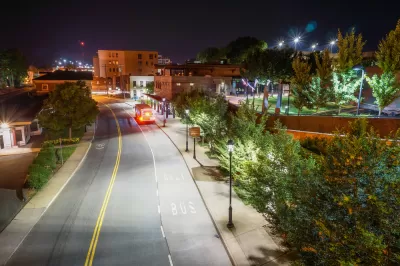The revised ordinance calls for higher density and more affordable housing.

Writing in The Cavalier Daily, Brandon Kile outlines the new zoning ordinance passed by the Charlottesville City Council, which “will allow for greater diversity in types of housing as well as require the inclusion of affordable housing in some future developments.”
The ordinance calls for higher housing density on commercial corridors and a 10 percent affordability requirement for buildings with ten or more units.
“By building more homes within city limits, we can make progress on our goals of bringing down housing costs, shortening commutes, reducing car dependency and helping the environment,” said Council Member Natalie Oschrin.
The ordinance is facing opposition from some residents who say the council did not fully consider the impacts of the new law. According to Oschrin, “I understand that people can be afraid of changes, but this is a historical correction to housing policies that were founded in racism and designed to perpetuate economic inequity,” adding that residents should “be excited about the future” of Charlottesville.
FULL STORY: New zoning ordinance garners mixed reactions from the Charlottesville community

Trump Administration Could Effectively End Housing Voucher Program
Federal officials are eyeing major cuts to the Section 8 program that helps millions of low-income households pay rent.

Planetizen Federal Action Tracker
A weekly monitor of how Trump’s orders and actions are impacting planners and planning in America.

Ken Jennings Launches Transit Web Series
The Jeopardy champ wants you to ride public transit.

California Invests Additional $5M in Electric School Buses
The state wants to electrify all of its school bus fleets by 2035.

Austin Launches $2M Homelessness Prevention Fund
A new grant program from the city’s Homeless Strategy Office will fund rental assistance and supportive services.

Alabama School Forestry Initiative Brings Trees to Schoolyards
Trees can improve physical and mental health for students and commnity members.
Urban Design for Planners 1: Software Tools
This six-course series explores essential urban design concepts using open source software and equips planners with the tools they need to participate fully in the urban design process.
Planning for Universal Design
Learn the tools for implementing Universal Design in planning regulations.
Ada County Highway District
Clanton & Associates, Inc.
Jessamine County Fiscal Court
Institute for Housing and Urban Development Studies (IHS)
City of Grandview
Harvard GSD Executive Education
Toledo-Lucas County Plan Commissions
Salt Lake City
NYU Wagner Graduate School of Public Service





























